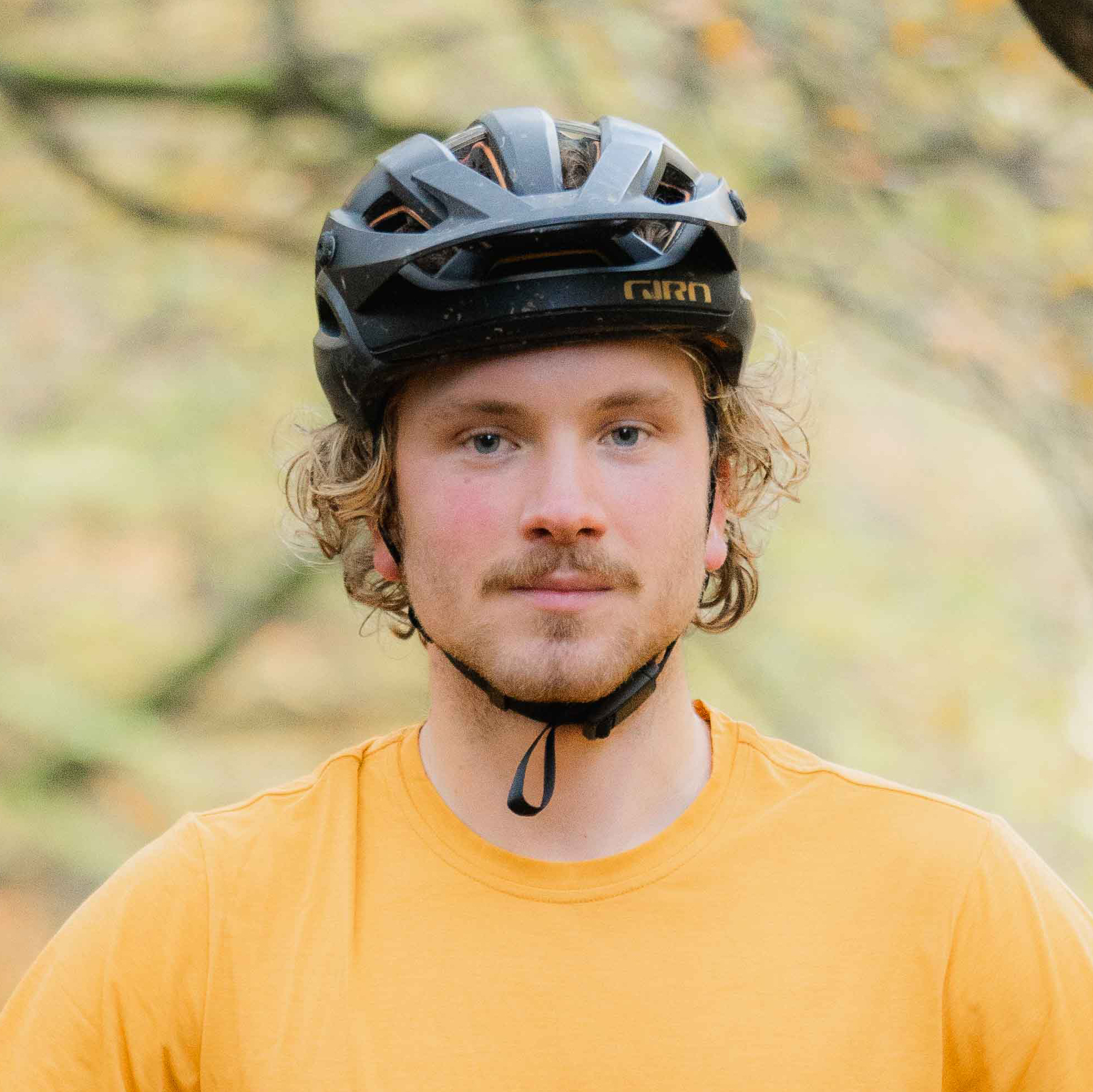The best bikepacking saddle bags will provide enough storage space for overnight or multi-day adventures while keeping your belongings safe and dry.
These bikepacking bags are one of the easiest ways to carry your belongings. They attach to the seatpost and saddle rails of your bike and often have between three and 15 litres of capacity.
We've rounded up the top-rated saddle bags as reviewed by our team of testers, who are no strangers to long stints in the saddle.
We've also put together a buyer's guide to these increasingly popular bags at the end of this article.
The guide explains mounting options, the differences between saddle bags and panniers, and what to look for when buying a saddle bag for bikepacking.
What are the best bikepacking saddle bags?
Restrap Race Saddle Bag
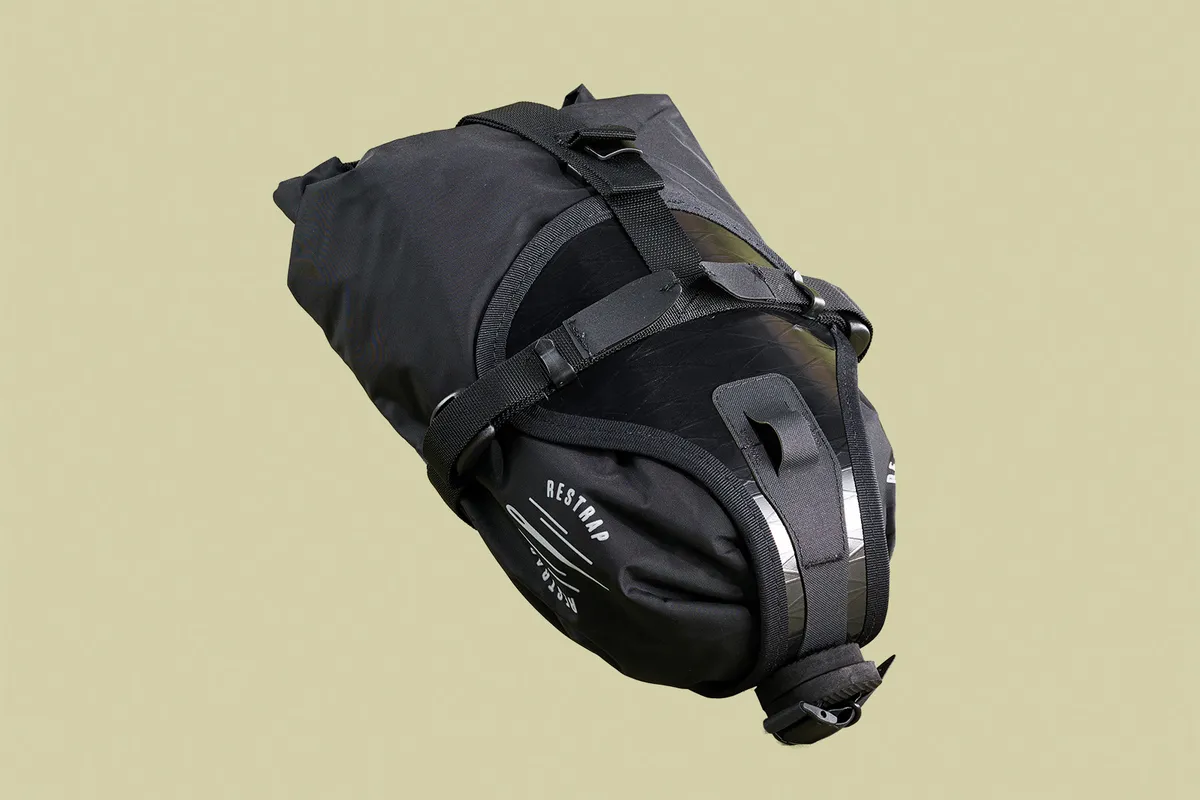
- Price: £106 / $159 / €128 as tested
- Volume: 7l
- Weight: 253g
Made in the UK, Restrap's Race saddle bag has a semi-rigid holster that attaches by threading Nylon webbing through two buckles. It is is fiddly, but once fitted, can be left.
A locking rubbery Hypalon strap holds onto the seatpost. The dense foam blocks separate the holster from your bike.
A good-sized roll-top waterproof drybag looks after your gear brilliantly, but without an air-release valve, needs squeezing to keep it from ballooning.
With the dry bag compressed, and the rear webbing strap passed through its looped closure, it can’t slip off.
Its Fidlock magnetic buckle provides security and rapid access, and with everything tightened, the 253g Restrap barely wobbles.
Zéfal Z Adventure R5
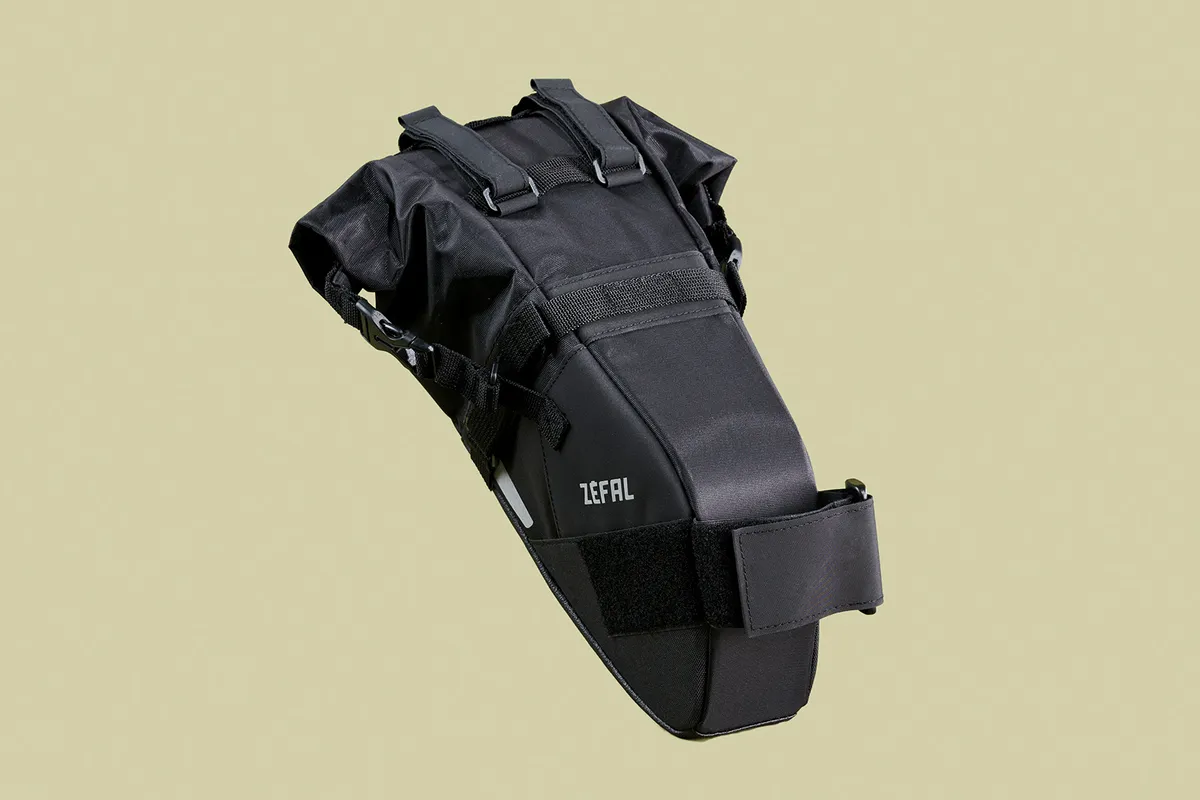
- Price: £50 / €46 as tested
- Volume: 5l
- Weight: 399g
Zéfal’s Adventure R5 has a TPU plastic, polyester and Hypalon (synthetic rubber) construction. It's hardwearing and resilient to muck and moisture.
The base has a rubbery layer to add extra spray protection, there’s a light loop, and several reflective elements too.
Its saddle rail and seatpost straps keep this compact pack perfectly stable. Adjustable straps neatly secure each side of the roll closure.
The red, heat-sealed interior is waterproof and ideal for a couple of extra layers, plus a spare inner tube or two.
Two Velcro straps on top enable you to carry a little more behind the saddle as well.
Alpkit Koala 13L

- Price: £90 / $120 / €110 (seatpack) | £22 / $25 / €23 (Exo-Rail) as tested
- Capacity: 13L
- Weight: 337g (claimed)
The Koala is handmade in the UK from a waterproof three-layer laminate and tough 1100D Cordura. The seams aren’t taped, but Alpkit’s Airlok Tapered dry bag (£15.99) can be used inside it.
The Koala has the usual pair of nylon straps that loop over the saddle rails and attach at the rear of the stiffened base, and three compression straps by the rolled opening.
Two Hypalon straps secure the pack to the seatpost. An upper sleeve enables the Koala to slide onto the Exo-Rail mounting system, whose 6mm stainless steel frame reduces sway and bounce. Together, the Koala and Exo-Rail weigh 434g.
Used alone, the Koala’s size makes it prone to swaying, just like most of its rivals, but the Exo-Rail gives you a feeling of connected stability, which is more comfortable when you’re out of the saddle. The bag shrugs off average UK conditions well.
Campagnolo Ekar Cluster 7 Gravel Bag
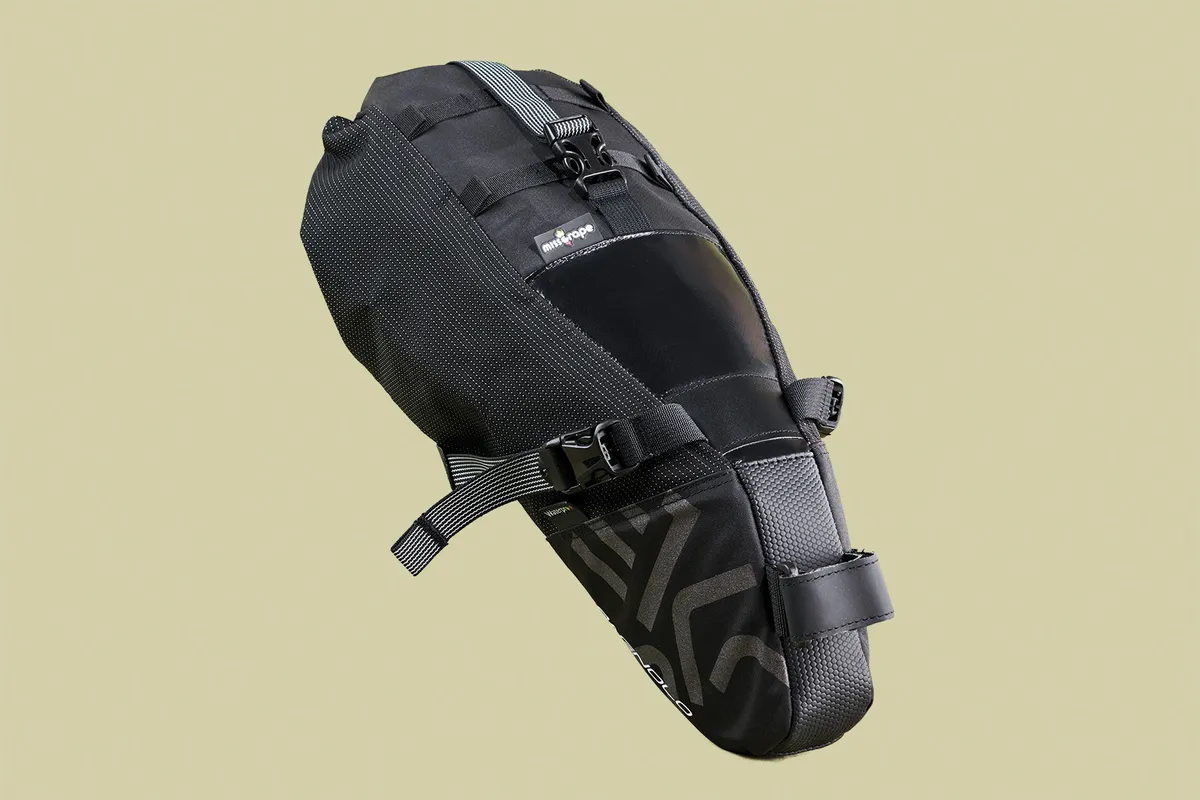
- Price: £160 / €169 as tested
- Volume: 7l
- Weight: 262g
Campagnolo's Ekar Cluster 7 Gravel Bag is a light, robustly made pack that wedges neatly under the saddle.
The nylon and polyester ripstop fabric has a waterproof internal polyurethane resin coating. The outer front section and underside are well shielded from the elements.
The seatpost and saddle straps are strong and well-positioned, so the bag didn’t move much when I was out of the saddle.
The roll closure and rear strap are efficient. There are webbing loops on top to attach extras, such as bike lights.
Evoc Seat Pack Boa

- Price: £125 / $150 as tested
- Volume: 3l
- Weight: 218g
There’s nothing standard about the compact EVOC Seat Pack Boa, including the price.
The rigid plastic nose has a ribbed rubber seatpost-gripping insert, secured by a Hypalon strap, and a cord tightened with a Boa dial.
The load space has reinforced, flexible sides. Velcro straps wrap it solidly to your saddle rails.
The tough single-layer polyurethane body material has welded seams and a waterproof lining. Again, you close it with Velcro tabs, before rolling up and securing it using a quick-release webbing strap.
Oxford Products Aqua Evo

- Price: £55 (10-litre seat pack) as tested
- Capacity: 10L
- Weight: n/a
The £55, 10-litre Oxford Aqua Evo Adventure Seat Pack’s chief concern is that the top strap that wraps around the seatpost is a couple of inches too short. This saw the strap loosen from the Velcro when riding to cause some swaying when out of the saddle.
As expected with the Aqua title and a touted (very high) IPX-6 waterproof rating, the fabric and welded seams deflected water in our powerhose tests to complete a winning, affordable bento box.
It’s a shame because it’s brilliant elsewhere, with the rugged build, waterproofing and ability to hold a sleeping bag, mini pillow, mat and change of clothes making this a bargain bag that comes close to top marks.
Also consider...
The following bikepacking saddle bags scored fewer than four stars, but they are still worth considering if they suit your riding.
Brooks Scape Seat Bag
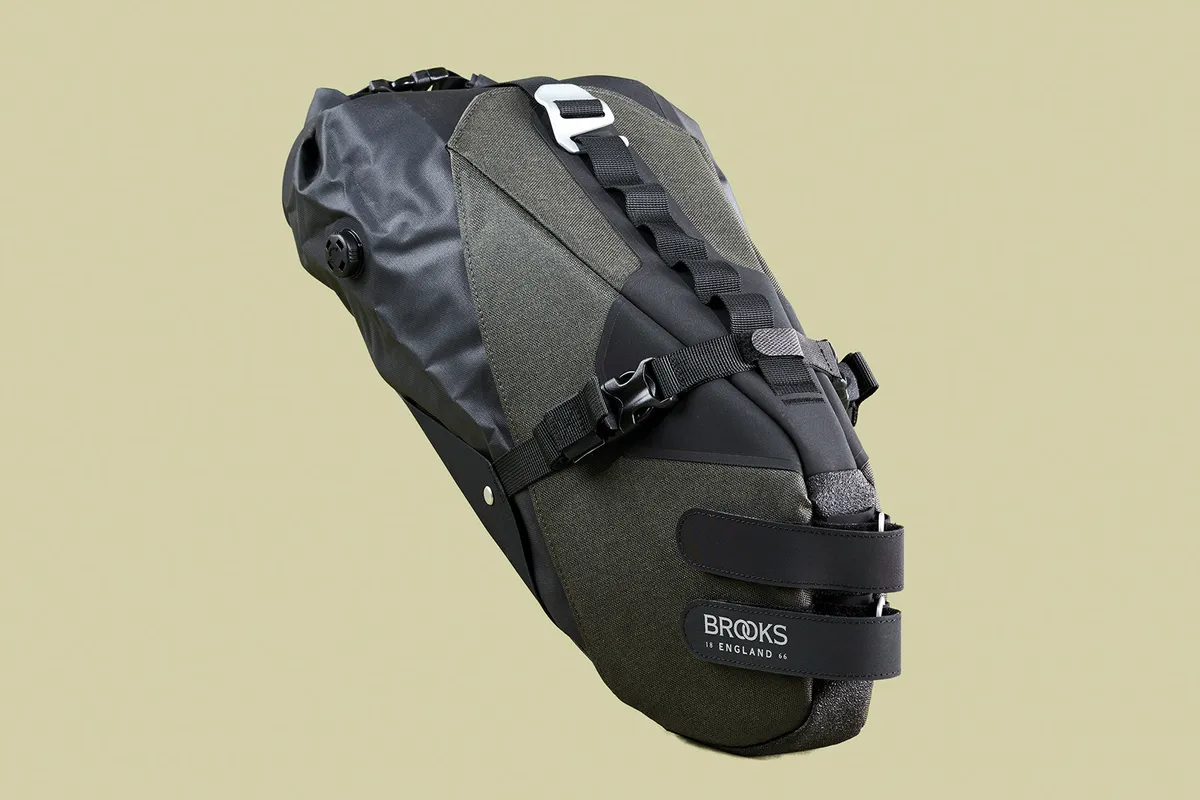
- Price: £120 / $160 / €140 as tested
- Volume: 8-10l
- Weight: 532g
The Brooks Scape Seat Bag has a large enough capacity for an overnight stop. The bag's size and premium materials do contribute weight though.
The bag's large clamshell polyester holster has a reinforced, hardwearing top and base with a drain hole.
Webbing saddle rail straps with cam-lock buckles are riveted to Hypalon wings, and two Hypalon Velcro straps grip the seatpost.
The spacious welded Nylon drybag is certified waterproof, and has a roll-top with buckle closure, and an air-release valve.
A broad webbing strap secures the dry bag and its aluminium hook attaches to the daisy-chain loops on top. However, this didn't prevent the Brooks Scape rocking from side to side when our tester rode out of the saddle.
SKS Explorer Exp. Saddlebag
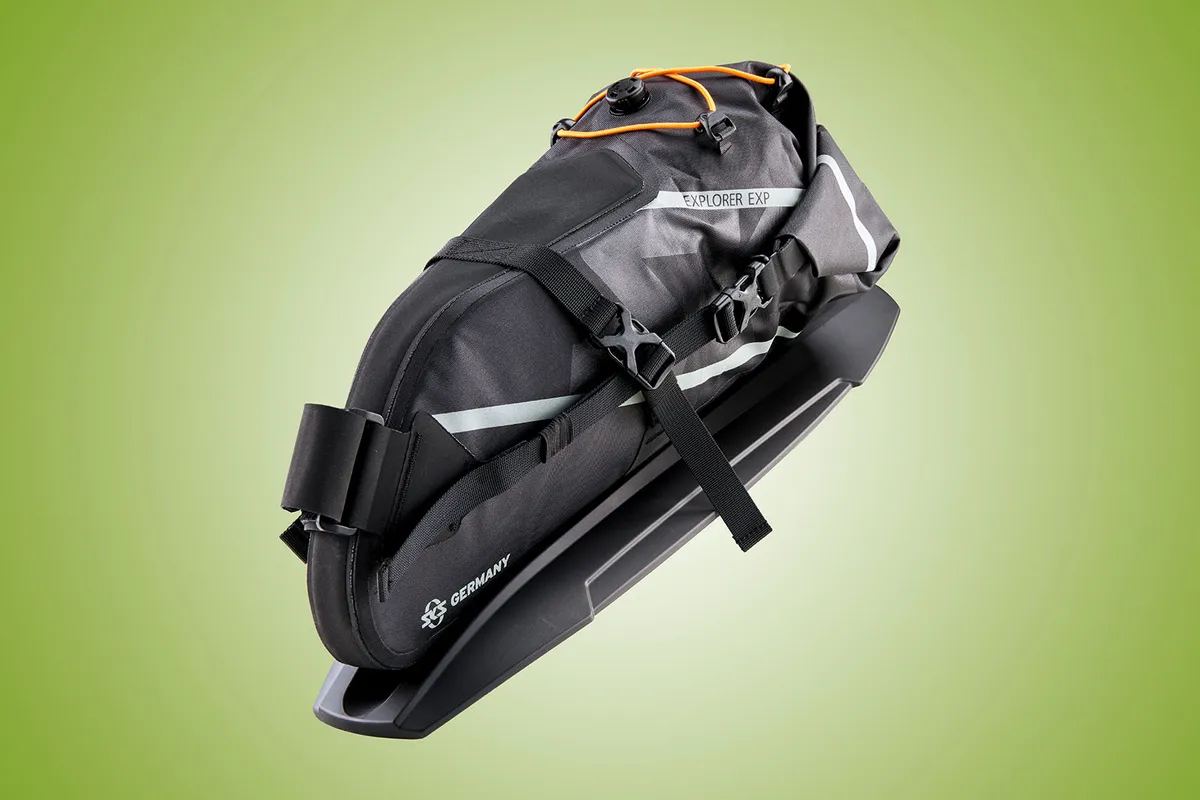
- Price: £90 as tested
- Capacity: 13L
- Weight: 500g
This one’s built tough, with its tightly woven Nylon fabric shell welded along its only seam, any external additions backed by welded patches and a waterproof coating inside.
Hardwearing Hypalon is used for reinforcing certain areas. A valve helps release unwanted air, an external bungee cord gives stowage options, there are three rear-light positions and it’s highly reflective.
Fitting relies on the usual combination of robust seatpost strap and two saddle-rail straps.
The bag’s stiffness, particularly with the mudguard fitted, minimises sway, but it does still sway when you’re out of the saddle: it’s not the worst, but can’t be ignored.
The contents survived some intense rain unscathed, helped by the generously sized mudguard, which kept the outside of the bag impressively muck-free, too.
Topeak Backloader

- Price: £65 / $87 / AU$121 / €77 as tested
- Volume: 6l
- Weight: 400g
The Topeak Backloader has a lightweight and very flexible Nylon outer. The curved base is fairly rigid and the side panels are stiffened at the front.
The thin outer offers reasonable weatherproofing, and the separate waterproof, internal roll-top bag keeps your gear dry.
A handy air-release valve on the outside helps reduce its volume and means you don’t need to remove the whole bikepacking seatpack during stops.
The internal volume seems generous, a reflective external bungee increases capacity and there are rear light mounts.
But, even with the compression straps pulled tight and buckles locked, the Backloader swung from side to side when our tester was out of the saddle.
Buyer’s guide to bikepacking saddle bags
What is a bikepacking saddle bag?

A saddle bag (or seat pack) is one of the most effective ways to add carrying capacity to your bike. With volumes commonly ranging from 3 to 15 or more litres, saddle bags are a key cornerstone of any bikepacking setup.
Attaching to your bike via the saddle rails and the seatpost, saddle bags offer an efficient and streamlined way to carry kit on your bikepacking adventure.
The biggest seat packs are large enough to comfortably accommodate bulky items such as tents and sleeping bags – crucial for multi-day missions. Smaller saddle bags are perfect for stashing a spare jacket, a hat and some food on all-day epics.
Providing you have enough clearance between the bottom of your saddle and the rear wheel, you can mount a seat pack to almost any bike, helping to turn it into a bikepacking bike.
Commonly seen on gravel bikes or road bikes, there are also saddle bags designed for mountain biking. These often have a slightly lower volume (to accommodate for rear suspension movement bringing the rear wheel closer to the saddle) and a specially designed attachment point for dropper seatposts.
Why do people use saddle bags rather than panniers for bikepacking?
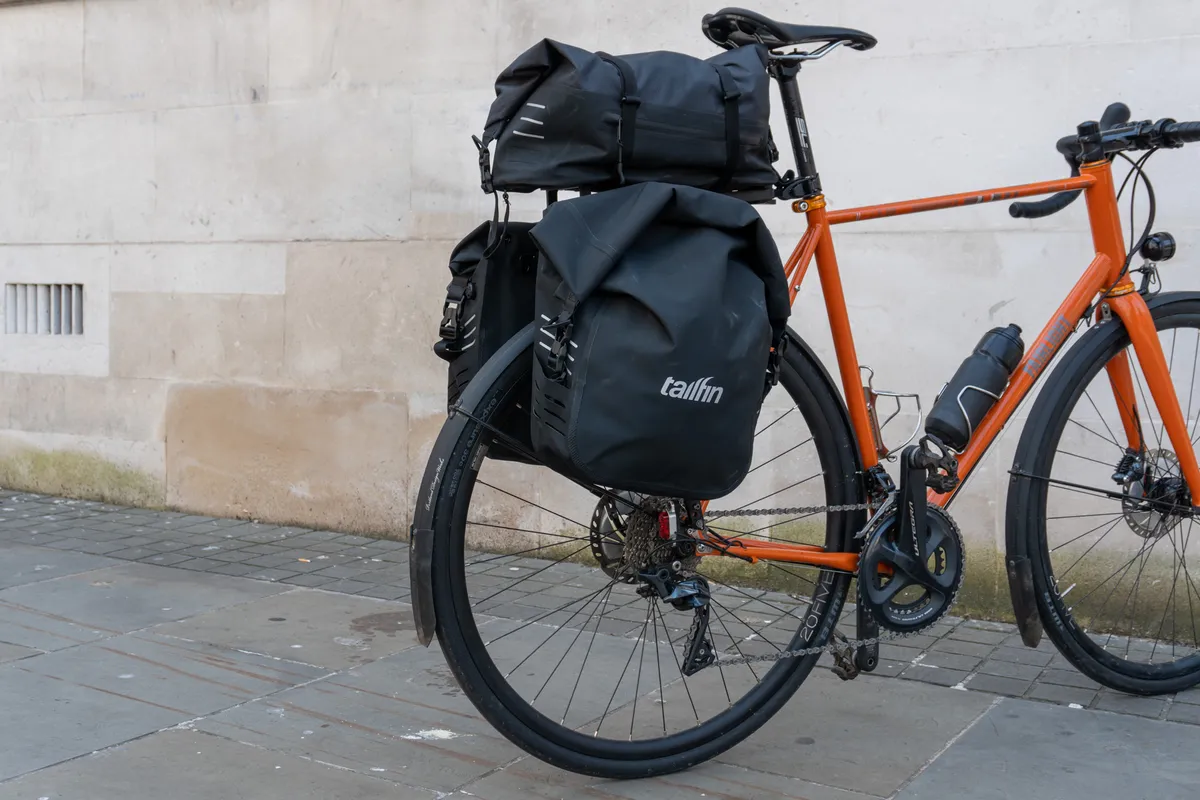
Once upon a time, if you wanted to carry heavy loads you would have likely opted for a rear rack and pannier bags, a firm favourite for touring bikes.
However, with the progression of bikes and technology enabling riders to venture further off the beaten track, and the advent of ultra-distance races, riders were looking for a lighter, sleeker and more aerodynamic way to carry their essentials.
Saddle bags tend to be more aerodynamic and lighter in weight than panniers. This can make a big difference when riding long distances, especially off-road on technical terrain.
Additionally, saddle bags offer a more balanced weight distribution by spreading the load across the bike in a compact and streamlined way. This further improves handling and stability, and enables riders to navigate technical trails without worrying about catching their bags on branches, rocks or shrubs.
What size saddle bag do I need for bikepacking?
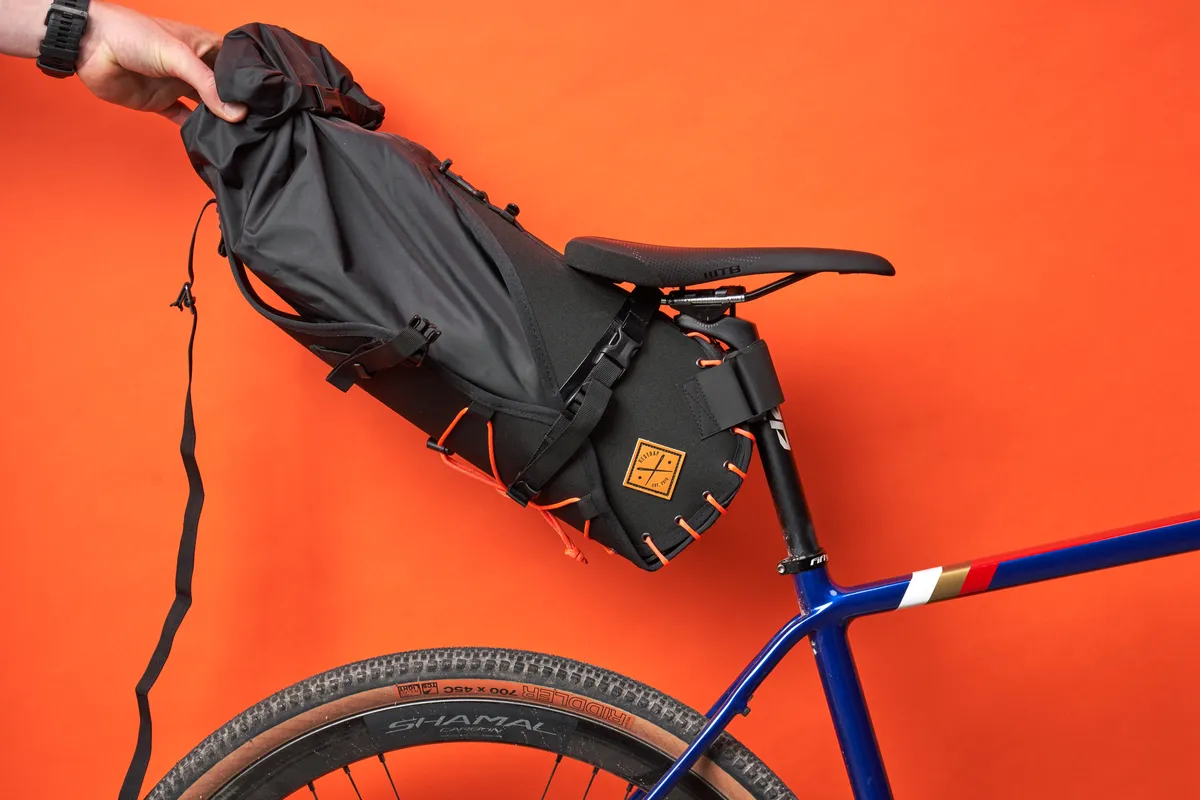
What size saddle bag you need depends on several factors. Firstly, it’s important to assess how much clearance you have between your saddle and your rear tyre. Then, you need to decide how much kit you want to carry in your seat pack.
If you plan on using your bikepacking saddle bag for multi-day camping trips, we would recommend getting as big a seat pack as your bike allows.
A seat pack is a great place for storing items such as tents and sleeping bags, freeing up storage in your other bags for smaller, more packable items.
Luckily, many of the best saddle bags use a roll-top design, meaning you can neatly reduce the volume of your bag if you don’t fill it to the maximum.
If you are mainly interested in audaxes and day trips, or fancy staying in accommodation overnight, a smaller saddle bag (around 7-10l) is perfect for stashing spare layers, food, pyjamas and any other essentials.
What to look for in bikepacking saddle bags
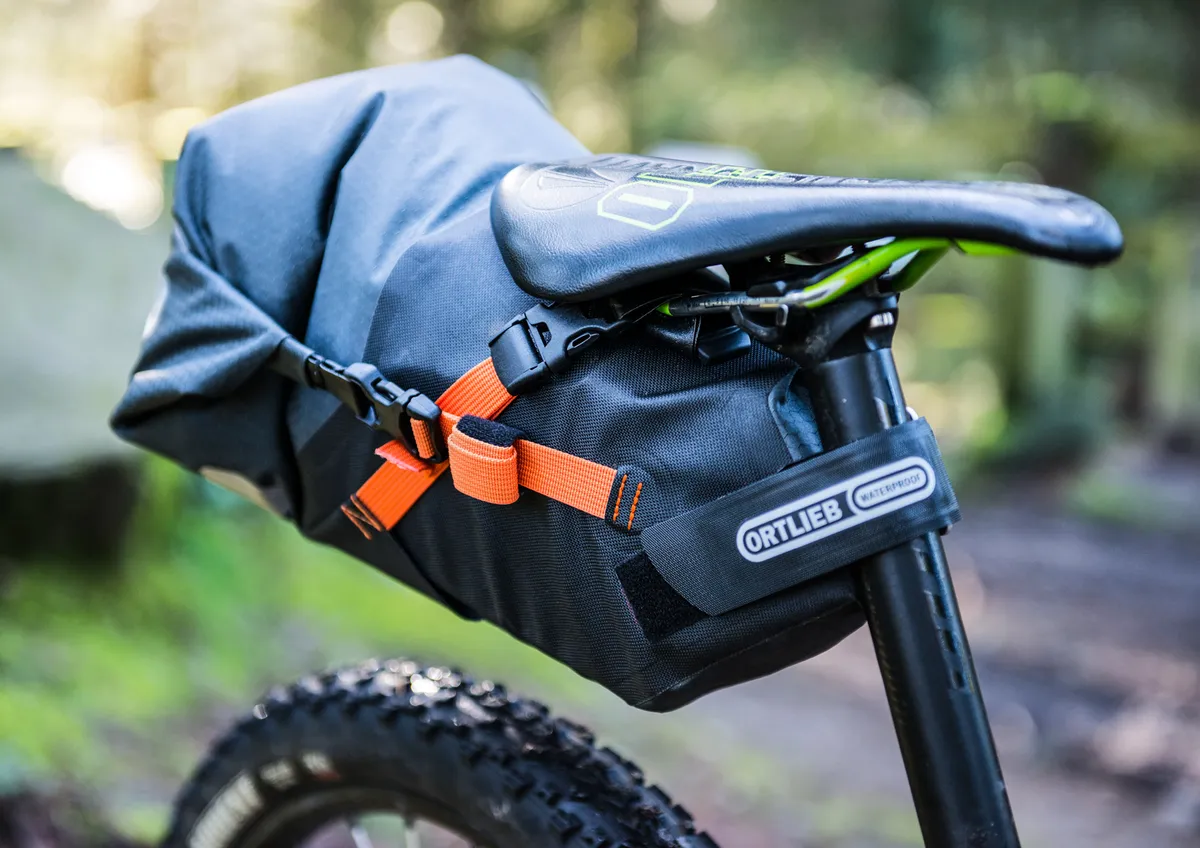
Attachment
A secure attachment mechanism is very important. Without a secure fit, the saddle bag will sway as you pedal, which can be unbalancing, especially if the bag is heavily laden.
Look for heavy-duty webbing to attach the bag to the seat rails and a thick strap to securely attach to your seatpost.
Ease of access
You don’t want to be spending ages accessing your kit at the end of a day in the saddle or when grabbing a rain jacket in a sudden downpour.
Some seat packs use a holster-style method, where an easily removable dry bag is secured inside a holster. While the holster can take a few minutes to fit and remove, the grab-and-go dry bag can be accessed instantly.
The roll-top closure of dry bags also means they can be rolled down to securely hold your kit even if they are not fully loaded.
Material
The best bikepacking saddle bags should last, so durable material is important. Hypalon is a common choice for saddle attachment points, and ripstop nylon or polyurethane make a good choice of outer material.
Of course, the bag can only be as tough as its weakest link, so make sure the buckles, webbing and straps are also tough enough for your adventure.
Waterproofing
Nobody likes a soggy sleeping bag, so make sure to take care of the waterproofing finish. Holster and dry bag styles have the added benefit of being easily repairable because the dry bag can be patched or, in the worst case, replaced relatively inexpensively.
Other bikepacking bags
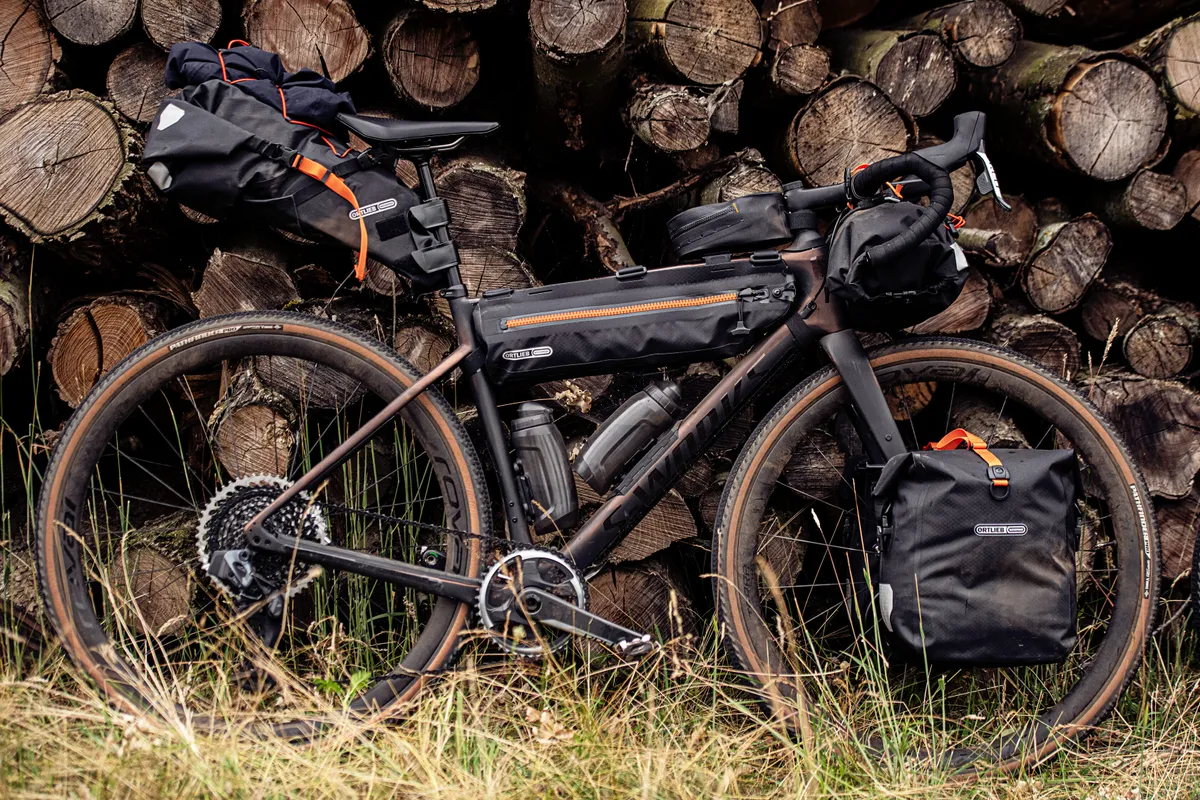
There are several types of bikepacking bags, each designed to serve a specific purpose. Here are some examples:
- Frame bags: Frame bags fill the space inside the bike’s front triangle, and are ideal for carrying heavier items such as water bottles, tools or food.
- Handlebar bags: Handlebar bags attach to the front of the handlebars, and are ideal for carrying bulky items such as a sleeping bag. If you ride a bike with a drop handlebar, your bag choice will be limited by the width of your bar.
- Top tube bags: Top tube bags are ideal for carrying smaller items that need to be easily accessible, such as a phone, snacks or a map.
- Fork bags: Fork bags attach to the fork legs of the bike, and are ideal for carrying items such as a stove, fuel, or extra water.
If you're looking to just carry essentials, such as a multi-tool or an inner tube, check out our guide to small bike saddle bags.
